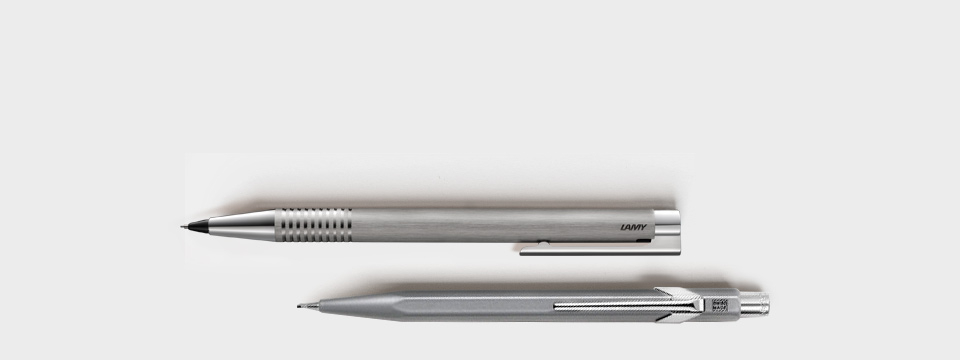Mechanical pencils are brilliant, they give you maximum drawing and writing mobility without the risk of wearing down or smudged lines. If your work, writing or drawing needs exact precision, you really shouldn’t consider anything other than a well-made mechanical pencil. Shopping around for one can get tricky from time to time, with seemingly endless models on the market all boasting their own special benefits, it’s hard to decipher which is going to actually work for you. Read on for a full guide to finding a quality mechanical pencil that’s right for you…

Why use a mechanical pencil?
A mechanical pencil is great for those looking to make tight, clean lines on the page. The benefits are major, including consistent width of lines, continuous balance, refillable lead minimizing waste, a choice for different styles and materials and the ease of not having to worry about sharpening your pencil constantly! They are smooth, simple to use and make many tasks so much easier, so you should definitely consider using a mechanical pencil if you like to write or drawn efficiently, consistently and precisely.
Choosing a pencil
Once you’ve wisely decided that the benefits of using a mechanical pencil are just too good to pass up, it’s time to get shopping! Now, you should be looking for a model that works for you and the craft that you do. In order to make the correct decision, you’ll need to look at three key components of a mechanical pencil, the clicking mechanism, eraser and lead thickness. Here’s what you should be looking out for…
Look at the mechanism
You’ll have a few popular options to choose from when it comes to the click mechanism, which basically just means the manner in which lead is fed through to your pencil. These include:
Shaker: You can simply shake your mechanical pencil up and down so that a built-in weight inside of it’s structure jumps up and clicks your pencil, feeding lead through for you.
Auto-feed: Auto feed pencils renew lead once the lead in use is worn down enough for the pencil’s nib to touch your page. A spring pushes back and feeds new lead into the tip!
Click: This is undoubtedly the most and common mechanism choice. A simple click at the top of your pencil and your lead feeds through.
Twist-click: A twist click is where you twist the top of the pencil’s barrel to click lead forward
Do you need an eraser?
Erasers on mechanical pencils are traditionally only there if you really need them, instead of being a key high-tech feature of the model itself. If you don’t want to depend on carrying your own separate eraser, you can consider a twist eraser that feeds upwards each time you twist the end of your pencil. This is convenient if you tend to need to eraser often or if you want to do some smudging on your artwork and sketches.
Consider lead thickness
Next stop, lead thickness. This makes a huge difference no matter what kind of pencil you’re looking at, so pay attention! You should select your thickness in regard to your usage, if you do tiny, detailed drawings or your handwriting is particularly dainty you’ll want to get a thinner lead. If you want a more dramatic line or you have large, flowing handwriting, you’ll need heavier. You’ll find mechanical pencils range between 0.5mm – 2mm, with medium thickness sitting around 0.9mm.
By consulting the points in this guide, you can be sure that you’ll select just the right mechanical pencil for you and your work!

